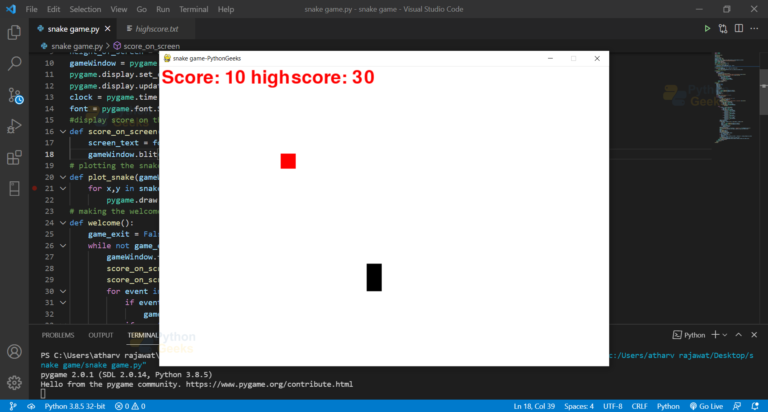
getRandomDirection(): Randomly returns one of the four directions: up, down, left or right.This dialog displays the user’s score and a button to restart the game. showGameOverDialog(): Displays a styled dialog pop-up when the Snake collides with any of the boundaries of the play area.You’ll use this function to spawn a new snake and food for the snake. getRandomPositionWithinRange(): Generates a random position on the screen within the bounds of the play area.This allows you to get the exact next position that’s step units away from the current position on an imaginary grid. roundToNearestTens(int num): Rounds off the passed integer argument to the nearest step value.
WHEN WAS SCREEN SNAKE CREATED HOW TO
Here are the pre-built functions you’ll find in the starter project, along with how to use them: The starter project also provides several useful utility methods so you can focus on the bigger picture: writing the game. You’ll add UI elements to it as you build the game. The starter project sets up the playing field. To avoid problems, delete the test folder, which Flutter generated when you executed the flutter create. Next, download your dependencies by double-clicking pubspec.yaml on the left-side panel, then clicking pub get at the top of your screen. command in the starter folder to generate the android and ios folders. You can use Visual Studio Code instead, but if you do, you’ll need to tweak some instructions to follow along.Ĭlick Open an existing Android Studio project and choose the starter folder from your unzipped download. Unzip the downloaded file and open it with Android Studio 4.1 or later.


Getting Startedĭownload the starter project by clicking the Download Materials button at the top or bottom of the tutorial. Now, it’s time to familiarize yourself with the starter project. To learn about the basics of Flutter and Dart, please checkout Dart Apprentice and Flutter Apprentice books. This also assumes that you are comfortable with the Dart programming language and conventions. Note: This article assumes that you know the basics of the Flutter framework including common widgets and their properties.


 0 kommentar(er)
0 kommentar(er)
